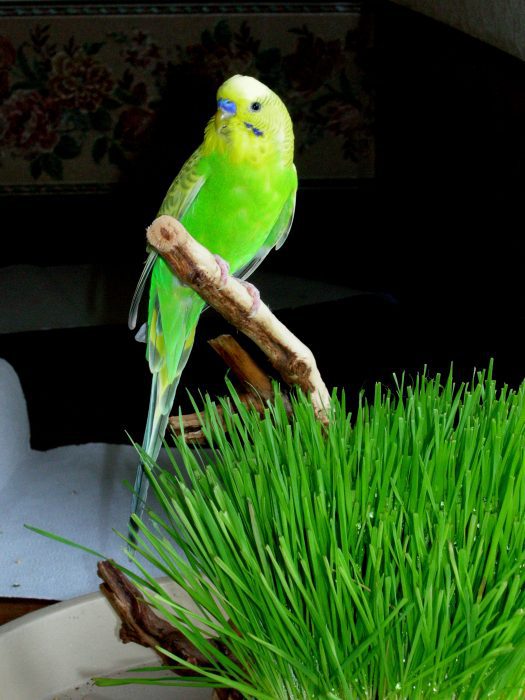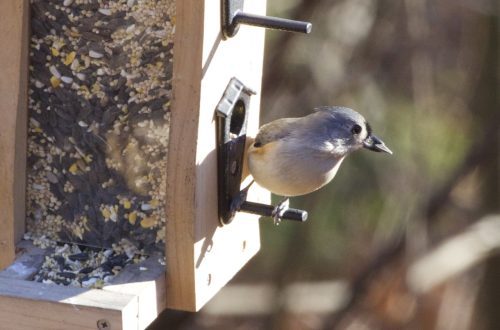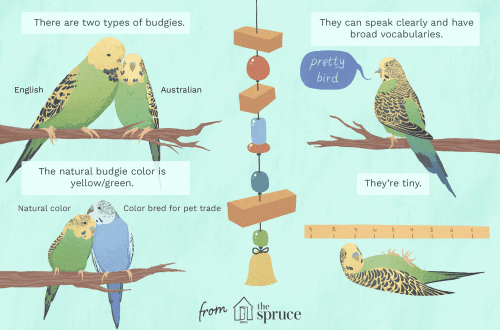
Budgerigar food
In Australia, in the native land of budgerigars, the diet of these birds is quite varied. Wavy love to eat berries and fruits, green shoots, a wide variety of grass seeds and grains. Despite the fact that in the wild they even manage to catch midges, the main diet still remains kangaroo grass seeds and crops of varying degrees of maturity.
The main diet of domestic wavy, as well as wild ones, is grain feed. This is the only type of food that can be left in the feeder all day.
There are two options for grain mixtures:
– you buy ready-made food;
– you get different types of grains and mix them yourself in certain proportions.
In both cases, in order for your budgerigar to get the maximum amount of nutrients, you need to know the types of crops and seeds that are safe for birds, as well as their quality and storage system.
A budgerigar should preferably be fed one well-balanced grain mixture for life. If you need to change the feed, this should be done gradually, changing its percentage in the feeder.
One adult budgerigar eats about 2 teaspoons of food per day.
For the well-being of a budgerigar, the following crops should be present in its diet:
– white, yellow, black and red millet (obligatory presence of this grain – 65% of the entire grain mixture);
– oats (20%, and with a home-made mixture, in extreme cases, you can replace it with oatmeal);
– canary seed – no more than 10% of the entire mixture – this is the most nutritious food, which includes fats, protein, lime phosphate and mineral salts. An excess of canary seeds in the diet of the wavy can lead to bird obesity;
– barley, sesame, Abyssinian nougat, rapeseed, buckwheat, paisa, Sudanese, mogar, sorghum, chumiza, oatmeal, wheat, meadow grass seeds (dandelion, plantain spikelets) – no more than 5%, as well as a small amount of raw sunflower seeds.
– hemp seed (no more than 4-6 seeds per day per bird).
Millet for budgerigars is dangerous for the development of diseases associated with the gastrointestinal tract.
The above crops and seeds do not have to be present in their entirety in the grain mixture. Most of them are used in soaking and sprouting mixtures – in this form, harder varieties of grains are more easily eaten by budgerigars.
With regard to industrial food for budgerigars, its correct packaging is carried out according to certain standards and indicating the date of manufacture. The food packaging itself after transportation must remain intact and hermetically sealed in cellophane or plastic. In no case do not buy food in cardboard boxes, provided that it is not in a sealed bag inside.
Paper tends to absorb moisture and accumulate substances harmful to grains and seeds. A damp pack of food can become moldy, and the contents can go rotten. Insects and other pests quickly start up in grains, which destroy food and are carriers of diseases.
Study the percentage of the feed, which is indicated on the package. Visually, the grains should look shiny, free of dust, dirt and chemical (technical) odors and insects.
You can make a small test: soak a few grains and observe the quality of germination and germination. If the grain is “dead” – there will be no result, such food should not be given to the bird. In addition to the lack of nutrients in it, there is a risk of poisoning the parrot with food infected with the fungus.
After purchase, pour the grain into a jar with a tight-fitting lid.
Pay attention to vitamin supplements that marketers like to advertise. They are not always necessary components in bird feed, more often even harmful. The so-called “vitamins” contain a mixture of flavorings, honey and dyes, which are poisonous to parrots. Some manufacturers impregnate the feed itself with vitamins, which leads to hypervitaminosis in birds.
Still, you should not give a budgerigar even a high-quality fortified food. The ripples mostly ignore the multi-colored granules in the grain that they don’t understand, so at best, you just overpay for virtually the same everyday food. If you nevertheless purchased such a package, then multi-colored granules must be selected. Food containing bread products (biscuits) or colored grains, but with normal grain composition and no odour, can be treated in the same way.
It is much better to increase the immunity of a parrot with fresh herbs, fruits, vegetables, young shoots and branches of shrubs and trees, cereals and sprouted grains, as well as mineral mixtures.

When fully fed with the above products and high quality grain feed, you will not need additional vitamin supplements. Except in certain difficult bird health situations where your wavy’s diet is under the supervision of an ornithologist.
If you have the opportunity to purchase grain separately with a guarantee that its processing, storage and freshness will not harm the health of your pet, then you can safely create a feed mixture for poultry yourself. Since such cases where all these requirements are met are extremely rare, it is better to choose a feed manufacturer with acceptable ingredients and high grain quality. Try to always have about 2 extra packs of food in the house, while controlling their expiration date. Under certain circumstances, a budgerigar can be fed with cereals for up to two days.
Now the range of companies – manufacturers of feed for wavy is very wide. But not always consultants of pet stores can give an objective assessment of a particular food or have sufficient knowledge in ornithology. In order to understand which food is better, most often we turn to the Internet for help: we read reviews of budgie owners, study forums and online pet stores.
Of the total number of feeding proposals, it was possible to single out a group of companies, reviews of which are mostly positive or recommendatory: Prestige Versele-Laga (Belgium), Padovan (Italy), RIO (Russia), Fiory (Italy), JR Farm ( Germany), Kiki (Spain), Sluis (Holland), Festival BestFriends (Denmark) and Cliffi (Italy).
But do not forget that no matter how high the feed rating is or no matter how many years you feed your parrot with your favorite grain, always carefully examine the contents of the pack for color, smell, dirt and insects after purchase. There are also failures in production – a pack of food with blackened wheat or suspicious oats may come across. There is also a chance to buy a fake, which can only be distinguished from real food by carefully checking the contents and comparing the packages.
The best food for your budgerigar will be one that combines your strict requirements for it and the preferences of a pet. The appearance and health of the parrot will speak for itself.
You can buy high-quality food for budgerigars from the list of companies proposed above by contacting the online store:
A balanced budgerigar diet is the key to good health and longevity for your bird.





